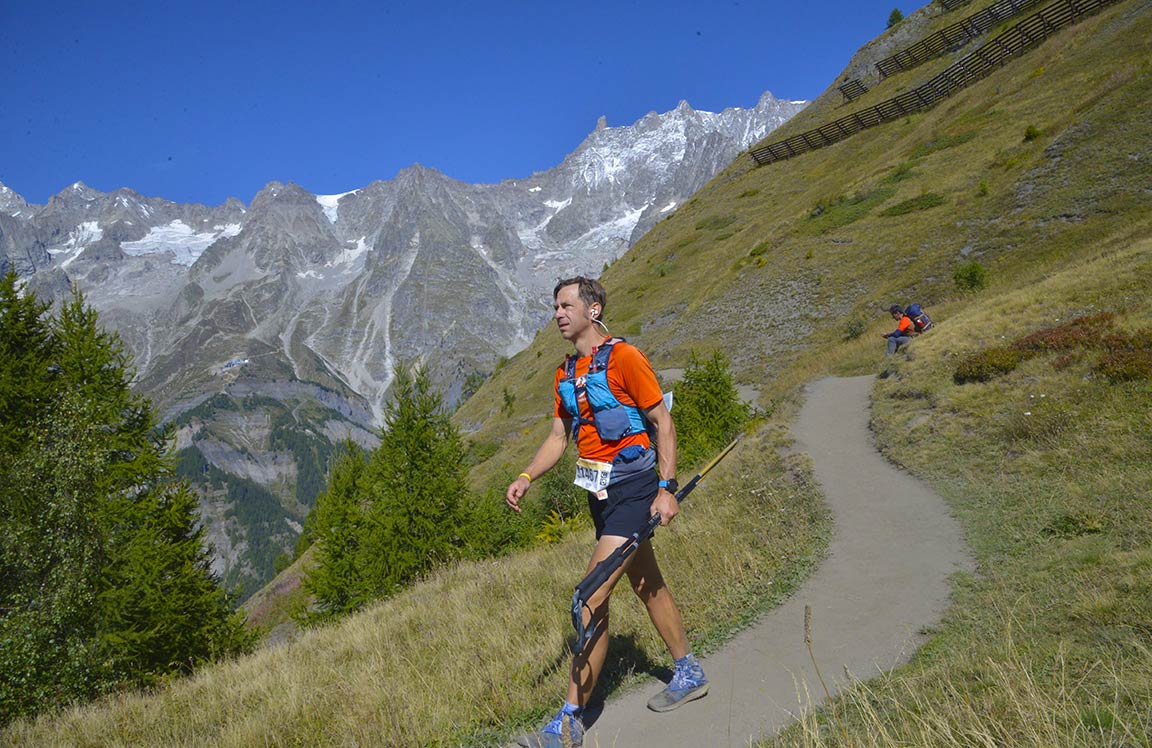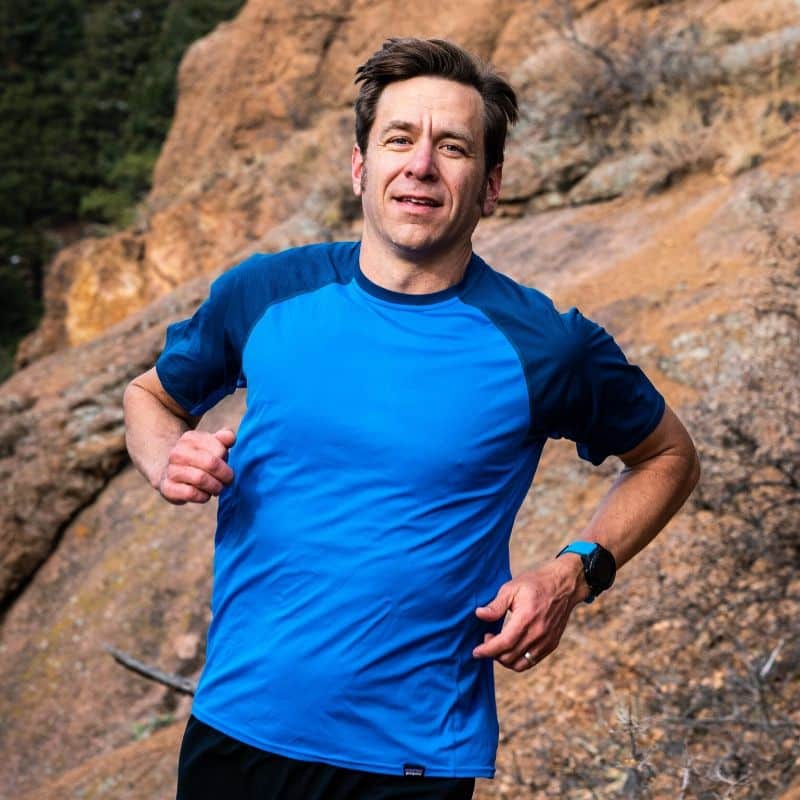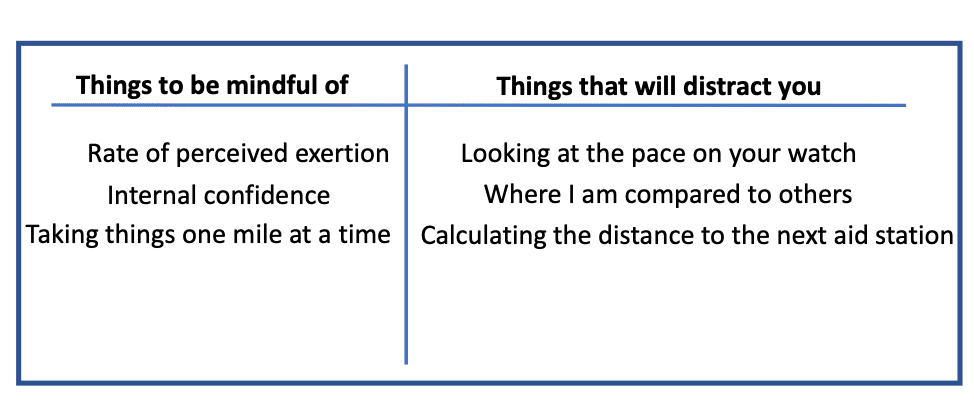
An Introduction to Mindfulness for Ultrarunners
By Jason Koop,
Head Coach of CTS Ultrarunning
Interventions in sport tend to borrow and steal lessons from other disciplines and redirect them in pursuit of improved performance. Take, for example, a pair of compression socks or pneumatic compression device (like the Normatec boots). These devices were originally developed for patients with poor circulation stemming from diseases such as diabetes. Compression interventions had been around for a long time before someone’s entrepreneurial spirit kicked in and said, ‘Hey, athletes need better circulation too. Let’s adapt these for a different audience.” Throw in some venture capital money, some Instagram influencers and voilà, the compression garment industry and pneumatic compression devices were born.
Mindfulness for athletes is no different. Originating in ancient Buddhism, mindfulness practices has been around for centuries as a form of meditation, simultaneous connection and detachment, as well as religious practices. At its core, mindfulness is a belief that all perceptions stemming from your thoughts, feelings and the inside and outside world are impermanent. Perceptions can come and go as they please, and we can alter how we react (physical and/or psychological) to them. Bringing this core belief into the sporting realm, athletes have used mindfulness techniques to better focus attention, perceive pain, and become more accepting (Bishop et al. 2004; Brown and Ryan 2003; Brown, Ryan and Creswell 2007).
Despite mindfulness’ religious background and the fact it conjures images of long haired meditating hippies sitting around a drum circle chanting ‘ommmmmmmm’, the practice is not woo-woo pseudo-science fluffery at all. Neuroimaging studies performed mindfulness practitioners have started to tease out exactly how the brain is impacted by different mindfulness interventions. Mindfulness can alter how the brain reacts to pain (Grant, Couremanche and Rainville 2011) and affects body awareness (Hase et al. 2015; Mehling et al. 2009), both of which athletes can leverage to improve performance.
Mindfulness strategies
In 2004, researchers Frank Gardner and Zella Moore developed a multi-phase mindfulness approach for athletes. Like any other area of athletic development, they suggest a ‘focus on the fundamentals’ approach first, then gradually ratcheting up the mindfulness’ difficulty and impact to real-world athletic scenarios. The original work, which is formally called the ‘Mindfulness Acceptance Commitment’ (MAC) approach to mindfulness has been adopted and adapted by coaches, athletes, and sports psychologists to suit the needs of their particular situations. The following is my interpretation of their framework, and that I have deployed with athletes. For a greater detail on this work, please refer to the citations located at the end of this article (Moore 2009, Gardner and Moore 2017).
Mindfulness Step 1 – Identify what matters in competition and what can lead you astray
Mindfulness for athletes does not necessarily begin with sitting on your favorite pillow in lotus position focusing on belly breathing. Instead, take a moment and inventory what you need to be mindful about in the first place, and what can distract you from those cues. For example, if you know you should be pacing your race off of your Rate of Perceived Exertion, looking at your watch is a distraction. Seriously, what information salient to evaluating your RPE are you deriving from your current elevation? There can be a lot to inventory and, to be honest, it can be overwhelming. So, to start out, pick a few and place the things that matter in one column and the things that can distract you from those in another.
While this is step one of your mindfulness journey, please feel free to revisit this as you move through the next three steps.
Mindfulness Step 2 – Introduce Mindfulness Practice
Mindfulness in ultrarunning begins in a simple and unrelated setting. Introduction to mindfulness can be done during benign and routine events that are performed daily, such as cutting your food, brushing your teeth, and even folding your clothes. Additionally, athletes acquainting themselves to mindfulness have a host of apps like Calm and Headspace to introduce basic mindfulness concepts. If you are considering mindfulness as tool in your mental skills arsenal, I highly encourage you to start with a basic subscription to one of these apps and have the narrator lead you though some of the basics. If you want to take matters into your own hands (literally, in this case), I suggest the following exercise the next time you do a load of laundry.
The next time you set out to fold your laundry, set up the room and a time so that you will be in a quiet, uninterrupted space. As you pick up each article of clothing, take time to feel the textures of fabric, noticing if your fingers move along any buttons or seams. Take a breath and notice the residual fragrance of the detergent you used. Notice where the balance is on your feet. As other thoughts steep into your mind, like the time you need to pick your kids up from soccer practice, take note of them and when they come and go. Notice when your attention has turned back to the touch and smells of your laundry task.
The point of this simple exercise is to bring awareness to all of the thoughts you have flowing in and out of your consciousness. At this point, you are not taking action on them, you’re merely noticing these thoughts and they come and go. You can do a similar exercise while brushing your teeth, taking a walk, sitting down on the floor in a traditional mediative setting, or any other benign task that suits you.
Mindfulness Step 3 – Learning to Accept
The next step in your mindfulness journey is the acceptance of your thoughts as neither good nor bad, but as they are. Being impermanent, thoughts entering into your consciousness can either stay or you can choose to redirect them somewhere else. In any case, they are what they are. They are not good or bad (as step one in this exercise could lead you to believe). Learning to accept and not judge these thoughts is the key in your next step of mindfulness. So, if during your routine task you notice that you are being judgmental about the thoughts entering your head (i.e. ‘this thought is bad/counterproductive’), remove the judgmental label, accept the thought for what it is, and redirect your attention to the task at hand.
► Free Ultrarunning Training Assessment Quiz
Take our free 2-minute quiz to discover how effective your training is and get recommendations for how you can improve.
Steps two and three of this exercise can be repeated daily and I encourage athletes to spend at least two weeks on these simple exercises before moving on to the next step.
Mindfulness Step 4 – Move to the field
Now that you have a grasp on thoughts entering your head during routine tasks, it’s time to take that strategy out into the field of practice during a normal training run. For this step, you will want to start small, preferably during one of your RecoveryRuns. Pick a section of the run bounded by two landmarks approximately 2-3 minutes apart. As you approach the first landmark, just as you did with the laundry exercise (or if you prefer to use one of the apps mentioned), make note of thoughts entering your mind. Once again, your goal is not to judge or place labels at this point, just notice as the thoughts come and go.
Repeat this on subsequent RecoveryRuns for up to two weeks.
Minfulness Step 5 – putting things into play
This is the step where you integrate what is beneficial and detrimental to your focus into practice. For this step, you will need to review your list from step one. Pick a day where you have a particularly demanding run or set of intervals. Either during the intervals themselves or on a climb during the run, perform your mindfulness activity as you did during the previous step. Once again, you are taking note of thoughts as they enter your space, not judging them but accepting them as they are. This time, though, for the thoughts that are beneficial to optimizing performance, direct attention toward these to take action. If you notice that your breathing rate is climbing uncontrollably during a climb, you would direct that thought to action (slowing down, in this case). If you notice you feel the need to look at your watch (something distractive of noticing your exertion), accept that thought as neither good nor bad but for what it is, and then redirect your mind to something that is productive (feeling the sensation in your legs, for example).
Enjoying This Article? Get More Free Running Training Tips
Get our coaches' best training advice, delivered straight to your inbox weekly.
This final step integrates the previous steps into a cohesive strategy where you are considering the natural thoughts entering your mind, without judgement, and choosing what actions to take. This entire process takes a few months to get a handle on. So, I suggest moving through these steps slowly, a few weeks at a time. The fundamentals are always important, so feel free to integrate previous steps concurrently with the step you are on.
References-
Gardner FL, Moore ZE. Mindfulness-based and acceptance-based interventions in sport and performance contexts. Curr Opin Psychol. 2017 Aug;16:180-184. doi: 10.1016/j.copsyc.2017.06.001. Epub 2017 Jun 17. PMID: 28813347.
Moore, Z. E. (2009). Theoretical and Empirical Developments of the Mindfulness-Acceptance-Commitment(MAC) Approach to Performance Enhancement, Journal of Clinical Sport Psychology, 3(4), 291-302. Retrieved Jan 25, 2021, from https://journals.humankinetics.com/view/journals/jcsp/3/4/article-p291.xml



Comments 2
Hey ( Jason Koop), I read the post entirely and couldn’t help thanking you for sharing with us this piece of informative resource. As a beginner learn many new thing from your article. I think a decent perfume, like a nice clothing, can improve your confidence and help you get through the day without being self-conscious about your body odor.
Another fantastic article!
Gives me a lot to think about. Pun intended.
Can’t thank you enough for all the amazing content and for cultivating the CTS community. It’s been especially important to feel part of such a dynamic group during the pandemic.